This vegetarian/vegan theiboudienne is a 100% plant-based alternative to Senegalese thieboudienne. It is full of flavour, and absolutely delicious.
Most people know thieboudienne (pronounced cheebu jeen) as the Senegambian fish-based red rice. Usually, the fish flavours (from the fried fish and fermented salted fish) are highlighted as the star of the dish. As a vegan (and even as a seasoned cook), there is no way I could 100% make substitutions that work, nor can I claim this is an authentic and traditional recipe. However, I think thieboudienne is as much about the vegetables and plant-based flavour as it is about the fish, which I intend to highlight in this recipe. There are no plant-based meats or alternatives, just vegetables, herbs and a lot of love.
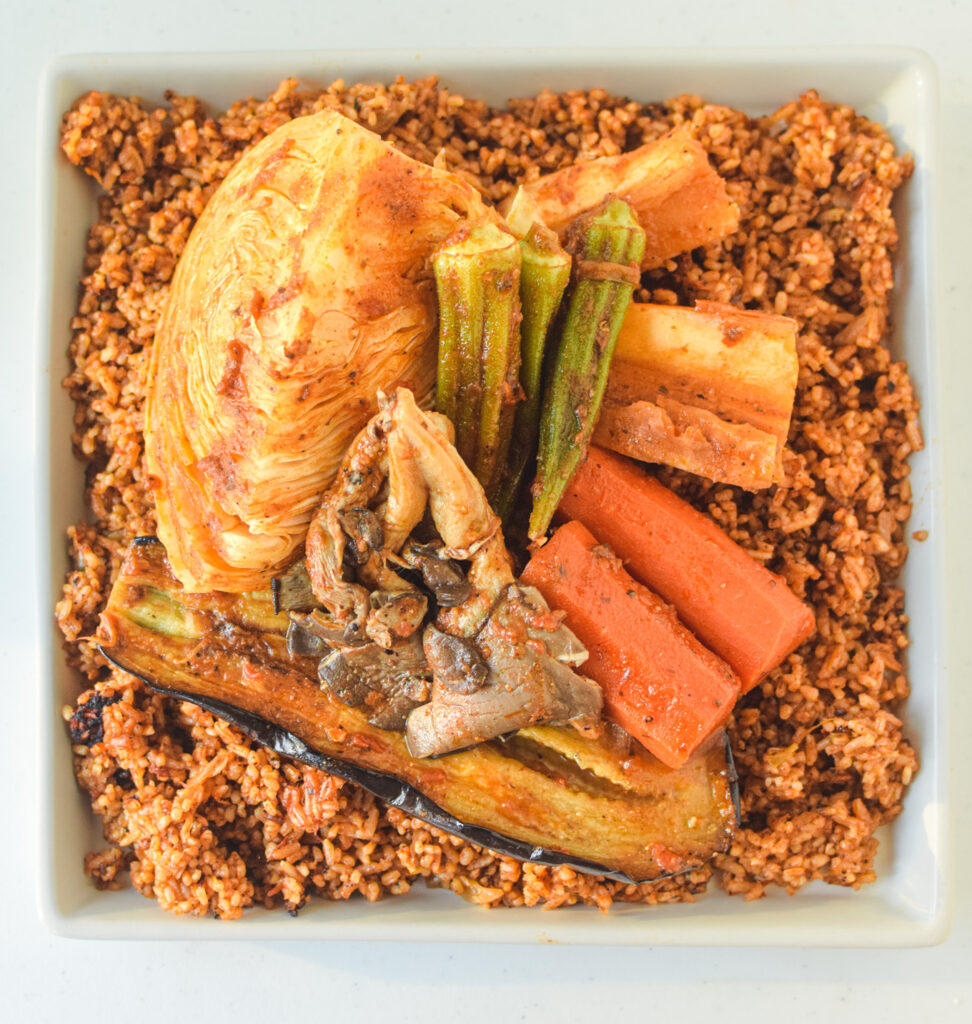
What is thieboudienne?
Thieboudienne is the Senegalese Jollof Rice (Gambia makes theirs pretty much identically but they call it benachin). Thiep/ceeb is the Wolof word for rice, while dienne/jën is used to refer to fish. Traditionally Thieboudienne is made with fish that is seasoned with a green herb seasoning, which is fried and then cooked in a tomato-based stew with lots of veggies like cabbage, carrots, cassava, okra, eggplants and made more. Once the veggies are cooked, everything is removed leaving a flavourful tomato broth in which the rice is cooked.
This vegetarian thieboudienne recipe is a labour of love with lots of components that give it a delicious flavour. It differs a lot in technique, ingredients, method and name from the Nigerian or Ghanaian Jollof, which most people know about. You can find more details about this in my blog post dedicated to all types of Jollof Rice in West Africa.
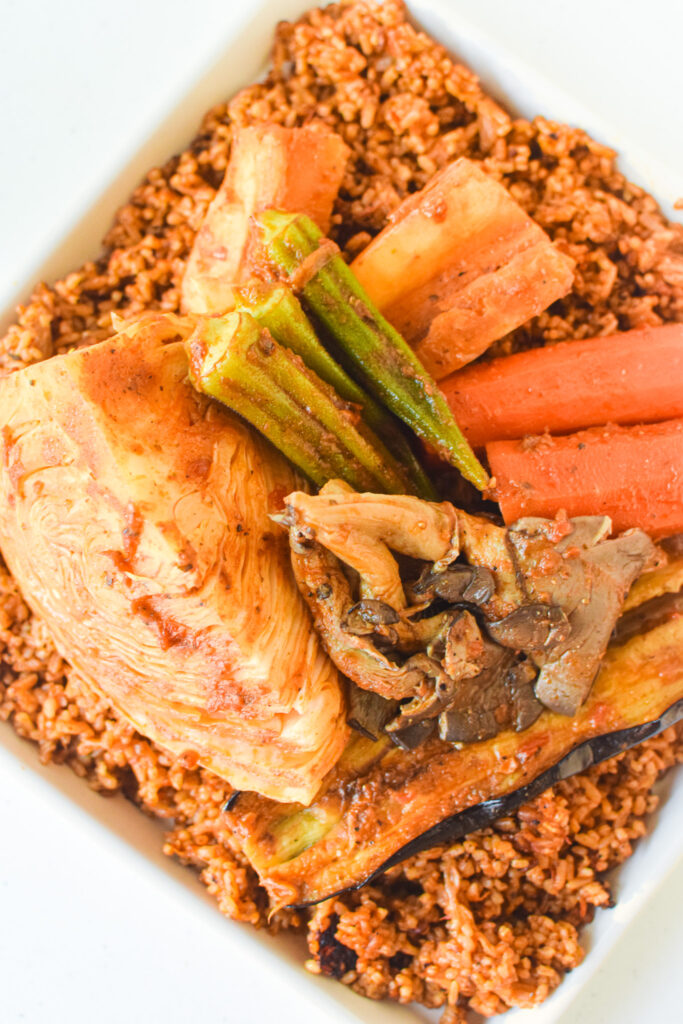
Why is thiebouddiene so important?
Thieboudienne is touted as the original Jollof Rice. Although it is not named Jollof it is widely understood that the name Jollof is based on the name Wolof, where this rice originated from. People have accredited its creation in the 1800s to Penda Mbaye, a chef in St. Louis Senegal who mixed rice with vegetables during a shortage of barley. I am personally not sure how accurate this dish’s history is given the timeline, but it remains undisputed that Jollof comes from the Senegambian region. The Senegambian region and as far south as Liberia is known for their acumen in rice cultivation so a rice-based dish starting from Senegal truly highlight the agricultural practices of this part of West Africa. Thanks to the Wolof, West Africa has an amazing dish that is diverse across the region and celebrates our varied cultural and cooking traditions.
What you will need for this vegetarian thieboudienne
Full disclaimer: this fish free thieboudienne is not a quick recipe. It is made for celebratory events and eaten communally so it is a labour of love.
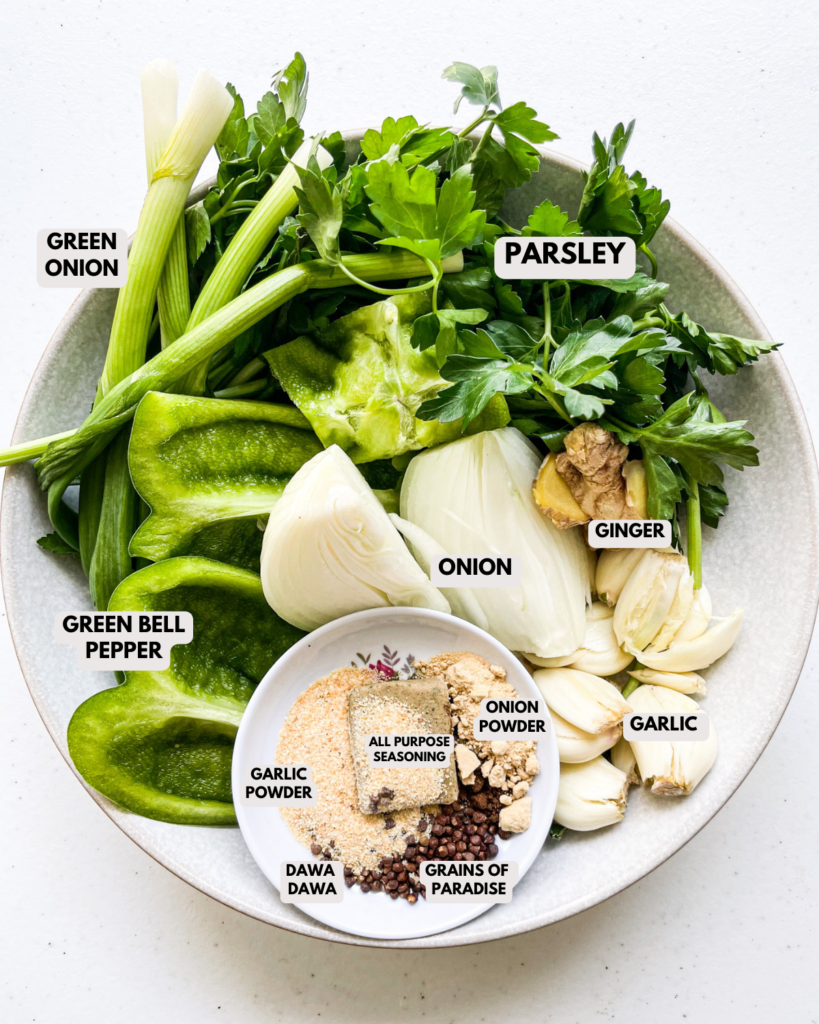
Nokoss Ingredients
- Green bell pepper
- Garlic
- small bunch of parsley
- onion
- ginger
- Garlic and Onion powder
- Grains of paradise or black pepper
- 1 vegetable bouillon cube (I use the Go Bio Organic Mushroom Bouillon)
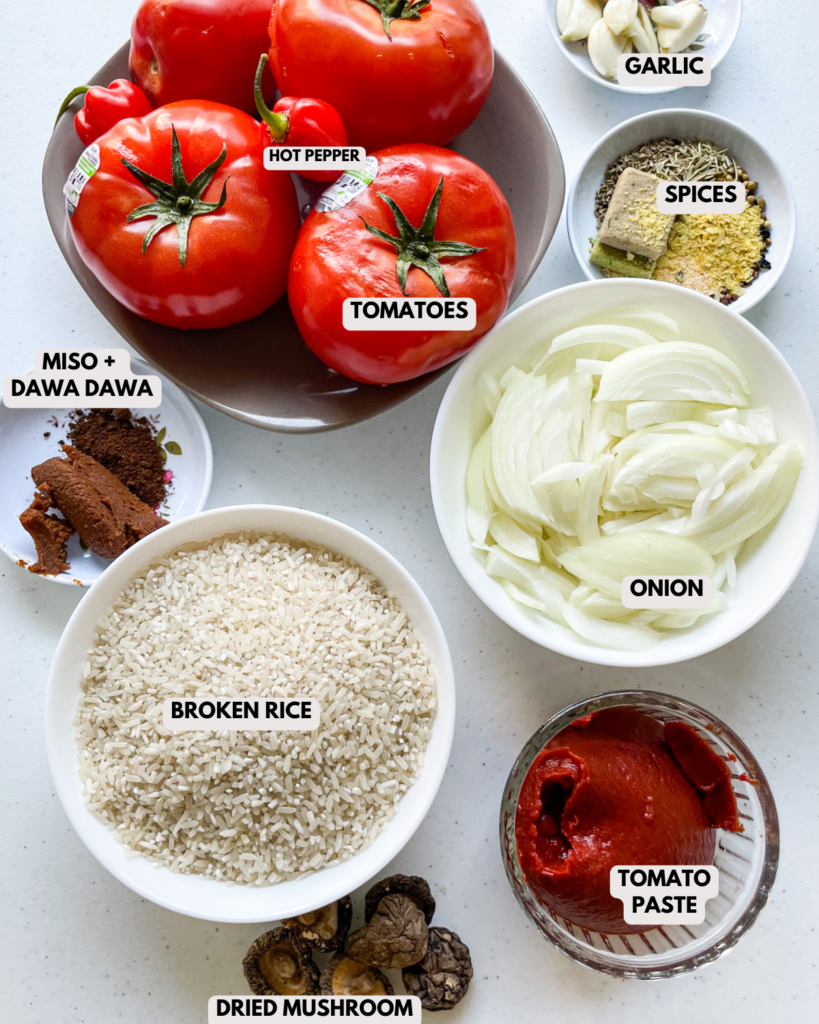
Stew Base
- Vegetable oil
- Aromatics: onion, garlic, scotch bonnet pepper
- Tomato: Tomato paste and Fresh Tomatoes
- Miso paste
- Dawa dawa (Fermented Locust Beans)
- Nokoss from above
- Broken Rice
- spices (garlic powder, seaweed, mushrooms, anise seeds, coriander seeds, rosemary, grains of paradise, sugar)
- Water
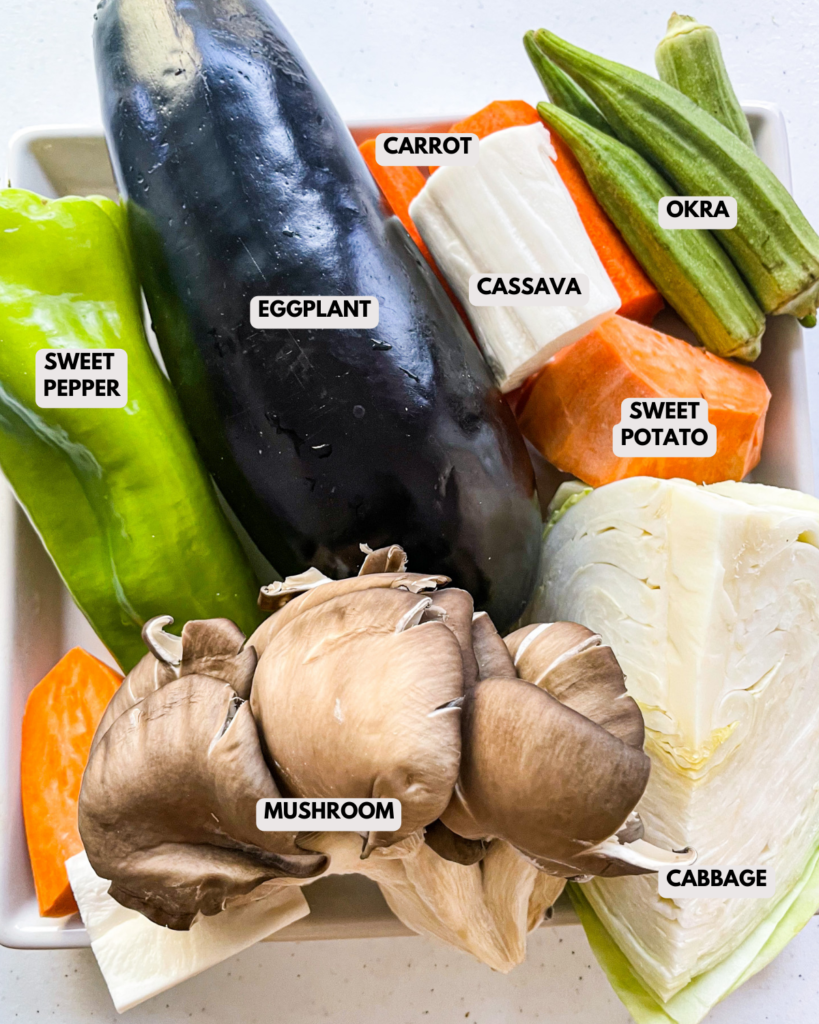
Vegetables
- Mushrooms (Oyster)
- Eggplant or Garden Eggs (If its large, consider slicing into long thin slices)
- Cabbage
- Carrot
- Cassava/ Yucca (peeled and cored)
- 5 okra
- Sweet Potato (roughly chopped)
How to make vegetarian thieboudienne
- Make the Nokoss
- Blend the nokoss spices first before mixing it in with the rest of the nokoss ingredients
- Stew
- Saute the onions in the oil till soft. Then add in the miso and dawa dawa
- Add in the tomato paste then the blended tomato mixture
- Bring to a boil then add spices and nokoss
- Cook at low heat til oil separates from the stew
- Veggies and Rice
- Add water, bring to a boil then add in your root veggies (carrots, sweet potato and yucca) and carrot first
- Sear your eggplant and mushrooms then add in pot with the okra
- Take out veggies as they cook and set aside
- Add in your washed rice and cook till tender
- Serve it all on a plate together.
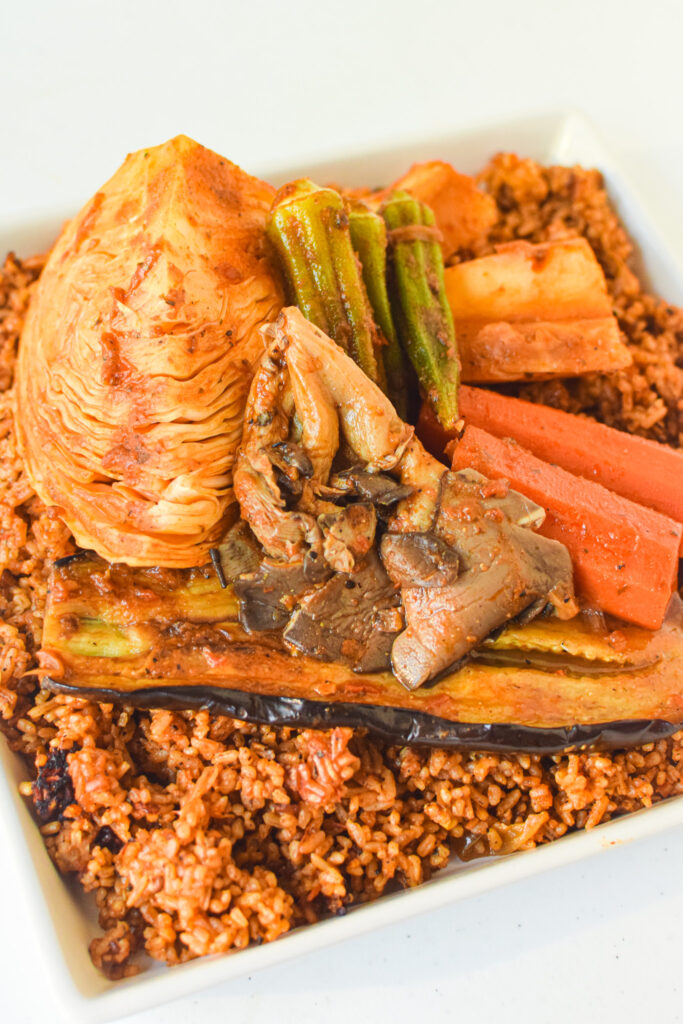
FAQ + Substitutions
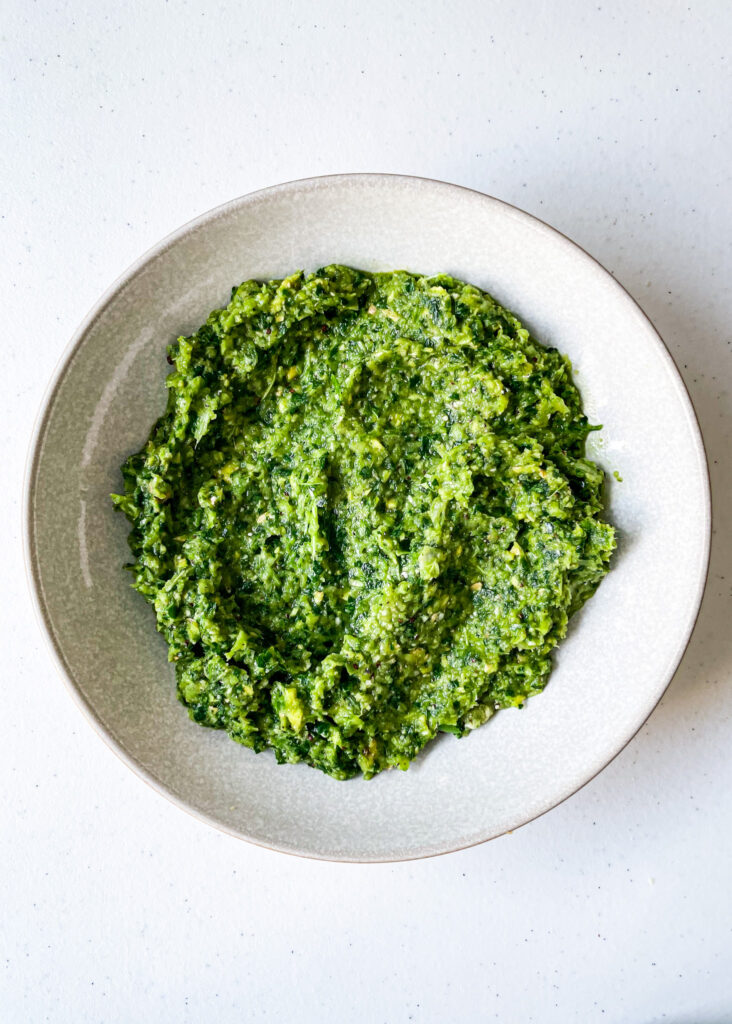
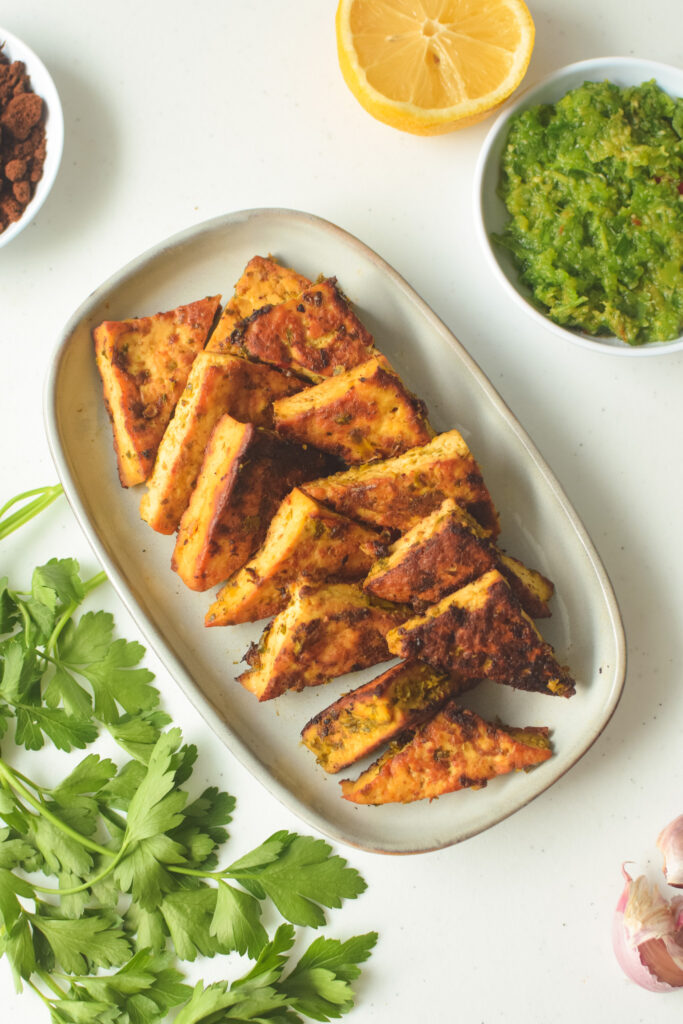
- What should I do with the rest of the nokoss? You can use it to make tofu like my Nokoss Tofu Recipe. You can add it to your favorite soups and stews (like Okra) or use it to cook any rice dishes. It freezes very well and all you need to do is leave it out to thaw for a few hours before using it.
- Can I use brown rice? You are welcome to use short-grain brown rice; it might need an extra quarter – to a half cup of water. You could also soak the brown rice as you are starting to cook the stew and maintain the same amount of water in this recipe. As for long-grain brown rice, you may have to soak it beforehand or cook it with more water. I haven’t tested this before so please make adjustments accordingly.
- Can I use long-grain rice? You can make broken rice in the blender by pulsing long-grain rice two to three times in the blender, or you can place it in a plastic back and give it a few hits. If you are set on using long-grain rice, you may need to adjust the water ratios by adding a few more tablespoons of water.
- Can I use any vegetables? You can use any type of carrot, any type of cabbage, or any type of root vegetable. You can omit whichever you do not care for and substitute for alternatives like zucchini, squash, or peppers. Just make sure not to overcook them.
- I want to add more protein, any suggestions? I have made this dish with tofu before. I suggest cooking the tofu separately using my Nokoss Tofu Recipe. Alternatively, you could add some cooked beans to the stew and cook the rice with it but I wouldn’t recommend it.
- Can I make this in the oven or instant pot? I wouldn’t recommend the instant pot or the oven given all the moving parts.
- I do not have access to a few of the ingredients (dawa dawa, miso, wakame), any suggestions?
- The dawa dawa is quite a unique flavor. Traditional thieboudienne might not include it but the smell from the dawa dawa adds that depth of flavor the traditional recipe has. You can remove it.
- The miso adds a fermented salted flavor to the dish. You can remove it and substitute it with a little bit of sea salt.
- Wakame is a Japanese dried kelp that adds a light fishy flavour but also umami. You can use nori sheets used for sushi or you can omit it.
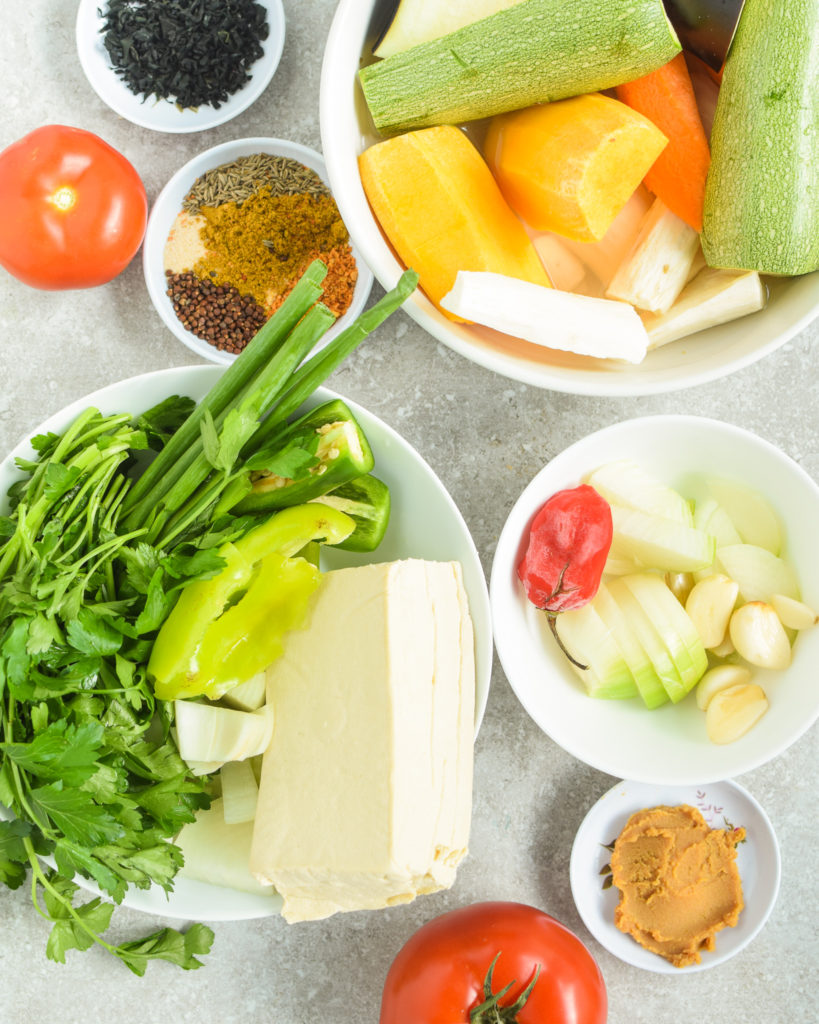
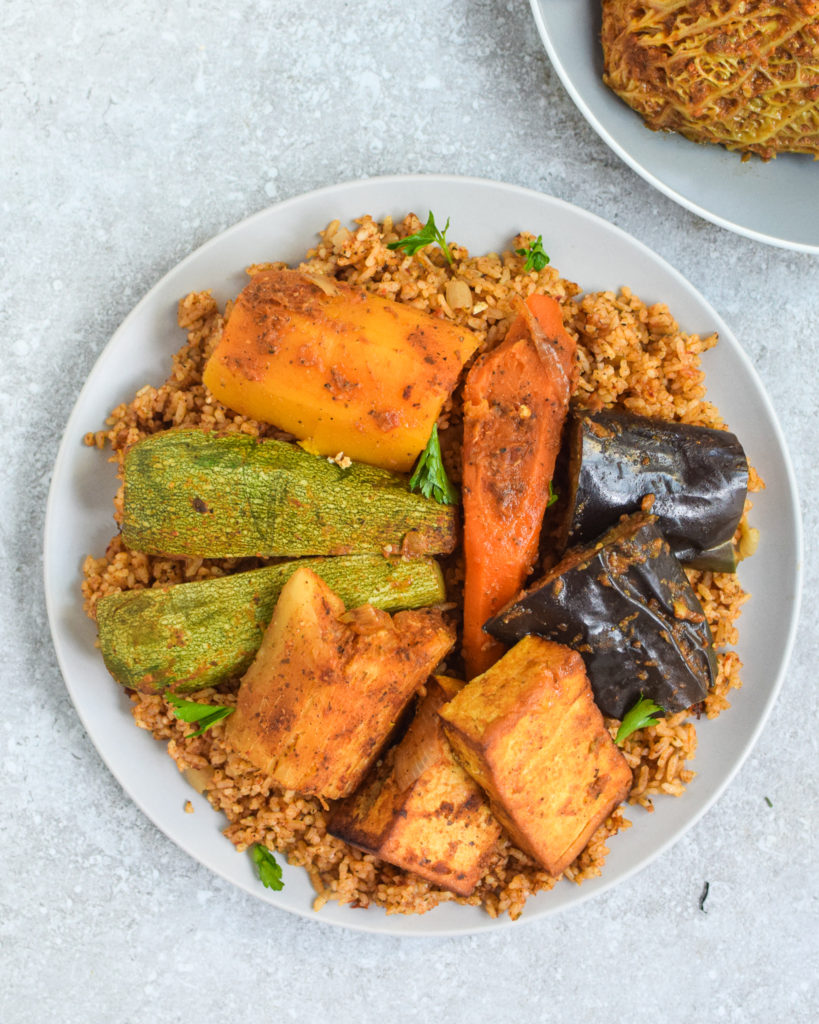
If you like this recipe, please make sure to leave a comment below! Thank you!
Vegetarian Thieboudienne
Ingredients
Nokoss
- 6 cloves of garlic
- 1/2 green bell pepper
- 1 small bunch of parsley enough to fit 1.5 cups packed
- 1/2 onion
- 1 thumb-size of ginger
- 1/2 tsp dawa dawa powder fermented locust beans
- 1 tsp garlic powder
- 1 tsp onion powder
- 1 tsp grains of paradise can use black pepper instead
- 1 vegetable bouillon cube I used the Go Bio Mushroom Bouillon
Stew for the Rice
- 1/3 cup oil I used avocado oil
- 1 medium onion chopped
- 1 tbsp miso paste
- 1 tsp dawa dawa
- 5 cloves garlic
- 1 small can of tomato paste
- 2 medium tomatoes
- 1/2 cup nokoss from above.
- 1.5 scotch bonnet pepper i like mine spicy but feel free to omit
- 2.5 cups of broken rice I used West African white rice but you can use broken jasmine. Check FAQ for alternatives.
- 1 1/2 tsp garlic powder
- 1 tsp of wakame Japanese Kelp/seaweed
- 3 dried mushrooms dried shiitake
- 1 tsp anise seeds
- 1 tsp coriander seeds
- 1/2 tsp dried rosemary
- 1 tsp grains of paradise can also use black pepper instead
- 1/4 tsp of sugar
- 1 tsp nutritional yeast
- 1 mushroom bouillon cube i used the go bio brand
- 2 3/4 cups of water
Vegetables
- 1 large king oyster mushroom
- 1 medium sized eggplant small garden eggs work well here
- a quarter of a cabbage
- 5 okra
- 1/2 large sweet potato 1 small sweet potato works
- 1/2 large cassava freeze the other half for banku or fufu
Instructions
Nokoss
- Blend the nokoss spices first
- Mix the spice blend with the rest of the nokoss ingredients and blend in a food processor or blender. For a smoother texture without added water, place onions at the bottom of the blender or closer to the blade
Stew
- Start by heating the oil at medium heat and sautéing the onions till soft
- Add in the tomato paste and cook for about 5 minutes then add in the miso and dawa dawa to cook for another 5 minutes.
- Meanwhile blend up your tomato with the garlic and scotch bonnet pepper. You should also grind your whole spices (garlic powder, wakame, dried mushrooms, anise seeds, coriander seeds, dried rosemary, grains of paradise, sugar, nutritional yeast) into a powder.
- Add in your blended tomato mixture along with your ground spices, bouillon cube and nokoss. The sauce should taste over-seasoned as the rice and water will dilute it.
- Cook the stew at medium-low for about 30 minutes till the oil separates to the top. Check periodically to make sure it doesn’t burn.
- As the stew is cooking prep your vegetables (peel carrots and chop into three, peel and roughly chop the sweet potato and cassava as well as slice your eggplants)
- After the 30 minutes to cook the stew had passed, removw about 1 cup of stew and set it aside. You can freeze the stew for later or eat it with some pasta or any carb of choice.
Vegetables and Rice
- Now that the stew is cooked, keep the pot at medium heat and add in the water to bring to a boil
- Start by adding in your vegetables, specifically the root vegetables first (carrots, sweet potato and yucca) and the cabbage.
- OPTIONAL Briefly sear the eggplants and mushrooms in a pan with a little oil till crispy.
- After about 15 minutes, add the eggplant, mushrooms and okra
- Take out veggies as they cook and set aside. This should take about 30 minutes so make sure to cover the veggies so it doesn’t cool down too quickly.
- Add in your washed rice and bring it to a boil. Check for salt and adjust to personal preference. Once the rice is boiling, turn the heat to low and cover it with aluminium foil. The rice will take about 30 -40 minutes to cook.
- Serve it all on a plate together. Place the rice at the bottom first, then layer the veggies on top.
- Serve with Nokoss tofu for some plant-based protein.

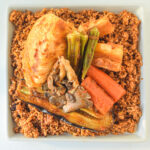
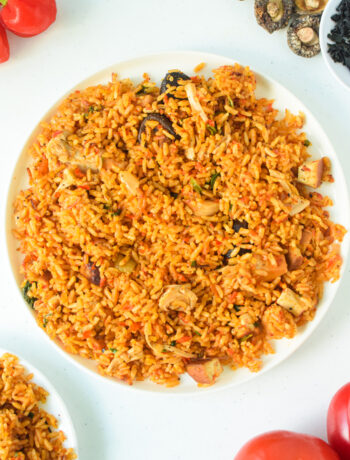
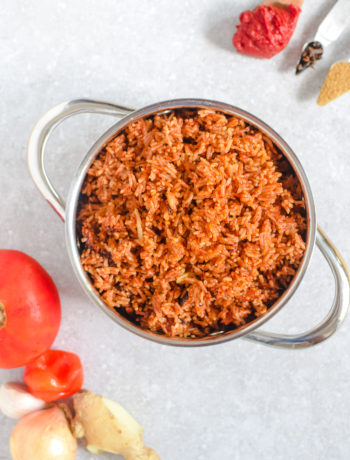
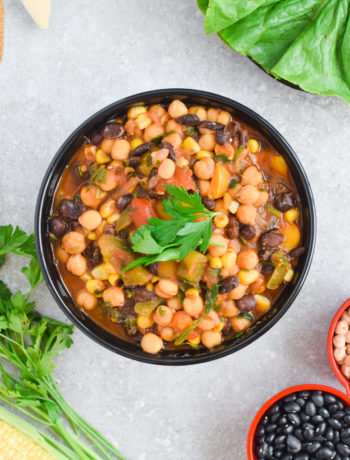
1 Comment
Lea Cane
April 10, 2023 at 5:34 pmJust made this Thiebu Jenn and it is absolutely delicious!! The only difference is I used dried porcini instead of dried shiitake !! But regardless, it was ABSOLUTELY DELICIOUS ❤️